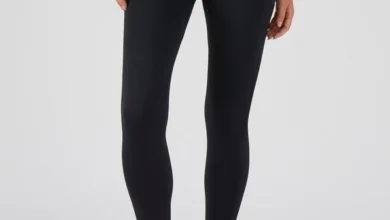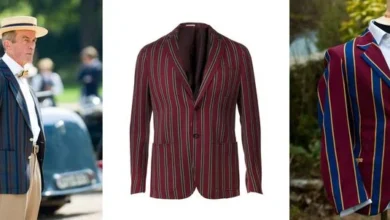Grace in Garments: The Ultimate Guide to Female Clergy Attire

As more women step into roles of spiritual leadership, female clergy attire has evolved into a powerful representation of both tradition and transformation. Women clergy are not just preaching and leading—they’re also reshaping how religious authority looks. Their attire plays a key role in this shift, balancing symbolism, functionality, and personal identity.
In many denominations, clothing worn by clergy is more than just fabric—it’s theology made visible. For women, the challenge and opportunity lie in finding clothing that reflects both their sacred calling and their individuality.
What Is Female Clergy Attire and Why Does It Matter
A Symbol of Service and Sacred Identity
Clergy clothing serves as a visual sign of vocation. For women, this attire often includes elements borrowed from centuries-old traditions, adapted for modern bodies and contexts. Female clergy attire is not only about conforming to expectations—it’s also about expressing authenticity, grace, and reverence.
Beyond aesthetics, proper clergy wear enhances visibility, provides authority in formal settings, and fosters a connection with the community. It sends a message of respect for the liturgy, the congregation, and God.
Traditional Female Clergy Attire
Timeless Pieces That Still Hold Power
Traditional pieces often worn by female clergy include:
- Cassocks and surplices: Long garments symbolizing humility, discipline, and spiritual readiness.
- Albs with cinctures: White, ankle-length garments tied at the waist, symbolizing purity and righteousness.
- Stoles: Representing the yoke of Christ, worn across the shoulders and reflecting liturgical seasons.
- Chasubles: Flowing outer garments worn over the alb and stole, typically used during the Eucharist.
These vestments vary by denomination—Anglican, Catholic, Lutheran, and Methodist traditions each have specific expectations. However, female clergy attire has increasingly been tailored to offer a better fit and proportion for women, departing from unisex or male-centered designs of the past.
Modern Approaches to Female Clergy Attire
Blending Reverence with Contemporary Design
Today’s clergywomen want to maintain spiritual integrity while embracing personal comfort and style. Modern designs are more inclusive of body shapes, sizes, and preferences. Common features include:
- Feminine tailoring that respects modesty and movement.
- Lightweight fabrics for better ventilation during summer services.
- Robes with slight embellishments such as embroidered symbols, satin linings, or color-accented cuffs.
Many women also seek practical options that allow for versatility across multiple settings, from officiating weddings to attending pastoral care appointments. Female clergy attire today is less about fitting into a rigid mold and more about blending spirituality with approachability.
Wardrobe Essentials for Female Clergy
Must-Have Items for Ministry Life
Every clergywoman needs a few reliable staples in her wardrobe:
- Clergy Blouses: Available in long- or short-sleeve options with tab collars. It can be dressed up with skirts or worn under robes.
- Clerical Shirts and Collars: Offered in feminine cuts and colors such as navy, gray, or burgundy.
- Formal Robes and Vestments: A classic black or white robe with an optional stole is versatile for most liturgical occasions.
- Comfortable Shoes: Leather flats or low heels that support long hours of standing.
- Undergarments and Layers: Slip dresses, camisoles, or breathable leggings may be worn for added modesty and comfort.
These essentials help clergywomen navigate the dynamic nature of their role—preaching, counseling, teaching, and celebrating sacraments—while staying polished and professional.
How to Choose the Right Female Clergy Attire
Consider Denomination and Worship Setting
Attire norms differ significantly across denominations. Some churches expect full robes and stoles; others may be more relaxed, allowing suits, blouses, or dresses. In multicultural or interfaith contexts, clergywomen often wear attire that resonates with the traditions of the communities they serve. Female clergy attire should always be rooted in cultural sensitivity and theological alignment.
Fit, Comfort, and Fabric Matter
Worship services often involve standing, walking, lifting, and reaching. Loose, breathable clothing in cotton blends, crepe, or silk is ideal. Tailored vestments help prevent tripping or bunching during processions. The right fit helps clergywomen appear polished without distraction.
Shop Smart and Sustainably
Ethical and sustainable choices are increasingly important. Many clergywomen seek vendors that offer fair-trade, custom, or handmade options. Retailers such as WomenSpirit, Gaspard, and Sacred Stitches provide high-quality pieces designed specifically for women in ministry.
When possible, invest in two or three high-quality garments that can be rotated and accessorized according to the season or occasion.
Clergy Attire and Gender Representation
Redefining the Image of Spiritual Leadership
Female clergy attire helps challenge traditional gender expectations. A well-dressed woman in a clergy robe defies outdated stereotypes and shows that spiritual leadership is not bound by gender. These garments also promote greater representation and encourage other women to pursue their callings.
By choosing attire that combines tradition with contemporary style, women in clergy roles send a powerful message of inclusion and empowerment. They are not just wearing clothes—they are wearing courage, conviction, and community.
Common Mistakes to Avoid in Female Clergy Attire
- Over-accessorizing: Avoid loud prints, excessive jewelry, or perfume that may distract during services.
- Neglecting functionality: Make sure vestments allow for natural movement and airflow.
- Ignoring symbolism: Always consider the spiritual meaning of stoles, colors, and emblems.
- Wearing overly casual clothing: Denim, sneakers, or tank tops are generally inappropriate unless permitted by the congregation.
Mistakes in attire can lead to misunderstandings about authority, role, or respect, so it’s worth the effort to dress thoughtfully.
FAQs About Female Clergy Attire
1. Can female clergy wear makeup and jewelry?
Yes, but it should be kept subtle. Small earrings, a simple necklace, or minimal makeup is usually appropriate as long as it doesn’t distract from your message.
2. Are pants acceptable for female clergy?
Yes, in many denominations. Women often wear tailored pants with clergy shirts or jackets for informal settings or pastoral visits.
3. Where can I find affordable yet professional clergy attire?
Websites like WomenSpirit, Almy, and Sacred Stitches offer a range of affordable, quality options, often with sizing and fit guides specifically for women.
4. Do female clergy need to wear different outfits for different services?
Not always, but many clergywomen keep different outfits for weddings, funerals, baptisms, and Sunday services based on formality and tradition.
5. How do you store clergy robes and stoles properly?
Use garment bags and padded hangers to avoid wrinkling or fading. Some clergy also store seasonal stoles in color-coded bins or fabric rolls.
Conclusion: Dressing with Grace and Purpose
Female clergy attire is a powerful blend of function, faith, and fashion. It signifies not just who you are, but whom you serve. Whether wearing a robe steeped in tradition or a modern clerical blouse, what you wear communicates reverence, dignity, and dedication.
As more women step into sacred spaces, their attire will continue to shape how we view ministry, leadership, and the role of women in faith communities. Ultimately, female clergy attire is about embodying your sacred role—gracefully, confidently, and authentically.
CLICK HERE, Dailynewsblog




